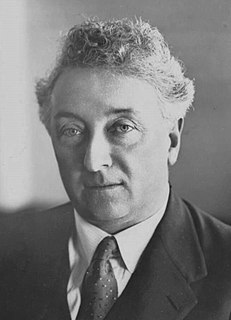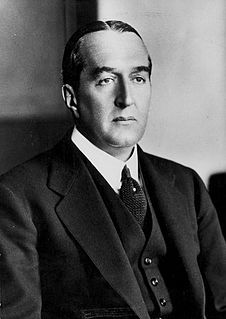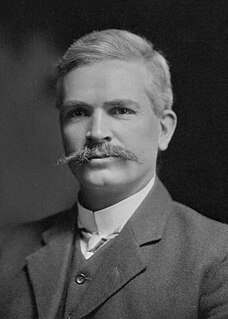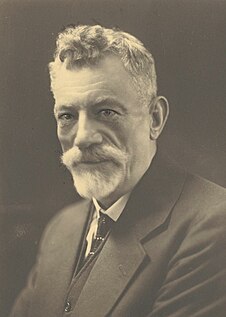
The 1998 Australian federal election was held to determine the members of the 39th Parliament of Australia. It was held on 3 October 1998. All 148 seats of the House of Representatives and 40 seats of the 76-seat Senate were up for election. The incumbent centre-right Liberal/National Coalition government led by Prime Minister John Howard of the Liberal Party and coalition partner Tim Fischer of the National Party defeated the centre-left Australian Labor Party opposition led by Opposition Leader Kim Beazley.
The Coalition is an alliance of centre-right political parties that forms one of the two major groupings in Australian federal politics. Its main opponent is the Australian Labor Party (ALP), and the two forces are often regarded as operating in a two-party system. The Coalition has been in government since the 2013 federal election. The party is currently led by Scott Morrison as Prime Minister of Australia since August 2018.

Federal elections were held in Australia on 24 March 1990. All 148 seats in the House of Representatives and 40 seats in the 76-member Senate were up for election. The incumbent Australian Labor Party led by Bob Hawke defeated the opposition Liberal Party of Australia led by Andrew Peacock with coalition partner the National Party of Australia led by Charles Blunt. The election saw the reelection of a Hawke government, the fourth successive term.

Federal elections were held in Australia on 11 July 1987, following the granting of a double dissolution on 5 June by the Governor-General Sir Ninian Stephen. Consequently, all 148 seats in the House of Representatives as well as all 76 seats in the Senate were up for election. The incumbent Australian Labor Party, led by Prime Minister Bob Hawke, defeated the opposition Liberal Party of Australia, led by John Howard and the National Party of Australia led by Ian Sinclair.

Federal elections were held in Australia on 18 October 1980. All 125 seats in the House of Representatives and 34 of the 64 seats in the Senate were up for election. The incumbent Liberal–NCP coalition government, led by Prime Minister Malcolm Fraser, was elected to a third term, defeating the opposition Labor Party led by Bill Hayden.

Federal elections were held in Australia on 26 November 1966. All 124 seats in the House of Representatives were up for election. The incumbent Liberal–Country coalition government, led by Prime Minister Harold Holt, won an increased majority over the opposition Labor Party, led by Arthur Calwell.

Federal elections were held in Australia on 10 December 1955. All 122 seats in the House of Representatives and 30 of the 60 seats in the Senate were up for election. An early election was called to bring the House and Senate elections back in line; the previous election in 1954 had been House-only. The incumbent Liberal–Country coalition led by Prime Minister Robert Menzies increased its majority over the opposition Labor Party, led by H. V. Evatt.

Federal elections were held in Australia on 10 December 1949. All 121 seats in the House of Representatives and 42 of the 60 seats in the Senate were up for election. The incumbent Labor Party, led by Prime Minister Ben Chifley, was defeated by the opposition Liberal–Country coalition under Robert Menzies. Menzies became prime minister for a second time, his first term having ended in 1941.

Federal elections were held in Australia on 28 September 1946. All 74 seats in the House of Representatives and 19 of the 36 seats in the Senate were up for election. The incumbent Labor Party led by Prime Minister Ben Chifley defeated the opposition Liberal–Country coalition, led by Robert Menzies. It was the Liberal Party's first federal election since its creation.

Federal elections were held in Australia on 21 August 1943. All 74 seats in the House of Representatives and 19 of the 36 seats in the Senate were up for election. The incumbent Labor Party, led by Prime Minister John Curtin, defeated the opposition Country–UAP coalition under Arthur Fadden.

Federal elections were held in Australia on 21 September 1940. All 74 seats in the House of Representatives and 19 of the 36 seats in the Senate were up for election. The incumbent Coalition, consisting of the United Australia Party led by Prime Minister Robert Menzies and the Country Party led by Archie Cameron, defeated the opposition Labor Party under John Curtin.

Federal elections were held in Australia on 23 October 1937. All 74 seats in the House of Representatives, and 19 of the 36 seats in the Senate were up for election. The incumbent UAP–Country coalition government, led by Prime Minister Joseph Lyons, defeated the opposition Labor Party under John Curtin.
Federal elections were held in Australia on 15 September 1934. All 74 seats in the House of Representatives, and 18 of the 36 seats in the Senate were up for election. The incumbent United Australia Party led by Prime Minister of Australia Joseph Lyons with coalition partner the Country Party led by Earle Page defeated the opposition Australian Labor Party led by James Scullin. Labor's share of the primary vote fell to an even lower number than in the 1931 election due to the Lang Labor split, but it was able to pick up an extra four seats on preferences and therefore improve on its position. The Coalition suffered an eight-seat swing, forcing Lyons to take the Country Party into his government.

Federal elections were held in Australia on 17 November 1928. All 75 seats in the House of Representatives and 19 of the 36 seats in the Senate were up for election. The incumbent Nationalist–Country coalition, led by Prime Minister Stanley Bruce, defeated the opposition Labor Party led by James Scullin.

Federal elections were held in Australia on 14 November 1925. All 75 seats in the House of Representatives and 22 of the 36 seats in the Senate were up for election. The incumbent Nationalist–Country coalition, led by Prime Minister Stanley Bruce, defeated the opposition Labor Party led by Matthew Charlton.

Federal elections were held in Australia on 13 December 1919. All 75 seats in the House of Representatives, and 19 of the 36 seats in the Senate were up for election. The incumbent Nationalist Party, led by Prime Minister Billy Hughes, defeated the opposition Labor Party led by Frank Tudor.

Federal elections were held in Australia on 5 May 1917. All 75 seats in the House of Representatives and 18 of the 36 seats in the Senate were up for election. The incumbent Nationalist Party, led by Prime Minister Billy Hughes, defeated the opposition Labor Party led by Frank Tudor.

Federal elections were held in Australia on 13 April 1910. All 75 seats in the House of Representatives, and 18 of the 36 seats in the Senate were up for election. The incumbent Commonwealth Liberal Party led by Prime Minister Alfred Deakin was defeated by the opposition Labour Party, led by Andrew Fisher.
This article provides information on candidates who stood for the 1922 Australian federal election. The election was held on 16 December 1922.
The history of the Australian Labor Party has its origins in the Labour parties founded in the 1890s in the Australian colonies prior to federation. Labor tradition ascribes the founding of Queensland Labour to a meeting of striking pastoral workers under a ghost gum tree in Barcaldine, Queensland in 1891. The Balmain, New South Wales branch of the party claims to be the oldest in Australia. Labour as a parliamentary party dates from 1891 in New South Wales and South Australia, 1893 in Queensland, and later in the other colonies.
























